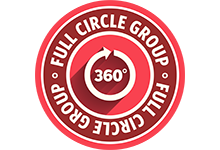
By Syda Productions
Team Building: Building A Team That Helps You Build
A well-oiled machine runs more smoothly and efficiently than a team that doesn’t work together. You may be the only employee when starting your auto repair business, so team building is key.
As your business grows, you will need to learn how to delegate tasks, and integrate team members so they feel ownership over their roles. This will help take your business to the next level while freeing up your time to focus on your own strengths.
The first step to building a lasting team is delegating tasks and giving employees ownership over their roles. This allows them to feel invested in the business’s success. You want your team members to feel empowered to do their jobs without feeling like you are constantly breathing down their necks. Trust is key when delegating tasks and giving employees ownership over their roles.
Giving Your Team Members Ownership Over Their Roles
An essential step to building trust with your team is giving them ownership over their roles. This allows them to grow and be responsible for completing their tasks and meeting deadlines. It also means they have the autonomy to make decisions within their area of responsibility. Motivate them to motivate themselves. Allow them pride over their position.
Decentralized business models are always more efficient than micromanaged and centralized structures. Gift your employees decision-making power and free the stress from your life.
Freeing Up Your Time as a Business Owner
Once you delegate and give employees ownership over their roles, it is important to actually step back. This signals that you are serious about their autonomy. This can be difficult for many business owners who are used to doing everything themselves. However, it is essential if you want to scale your business.
By trusting your team and giving them the freedom to work independently, you will be able to focus on your strengths and grow your business even more.
Building a lasting team is essential for any auto repair shop owner who wants to scale their business. The key is delegation, integration, and giving employees ownership over their roles. By following these steps, you can free up your time as a business owner to focus on your strengths and grow your business.
Contact You Net Results, and we’ll assist you in becoming the leader you always wanted to be. Book a complimentary consultation. Brian Gillis and his team will help you build your leadership foundation and plug you into a vast network of auto repair shops. We all work together to strengthen the industry! Let’s make October the best month of your business life!


 If you are looking to
If you are looking to 
 What disciplines are lacking in your leadership through change?
What disciplines are lacking in your leadership through change? Why can’t I change?
Why can’t I change? Need a method of managing transition? Please see the seven step process listed below, taken from Leader to Leader Institute’s Leading Transition article:
Need a method of managing transition? Please see the seven step process listed below, taken from Leader to Leader Institute’s Leading Transition article: Three key words – transition, change, and implementation -w from the Leader to Leader Institute: Leading Transition: A New Model for Change. Have you ever barked and order, “Just do it”? And what are you supposed to do when they just don’t do it – when your people do not make the changes that you need to be made?
Three key words – transition, change, and implementation -w from the Leader to Leader Institute: Leading Transition: A New Model for Change. Have you ever barked and order, “Just do it”? And what are you supposed to do when they just don’t do it – when your people do not make the changes that you need to be made?

 Remember the
Remember the 



